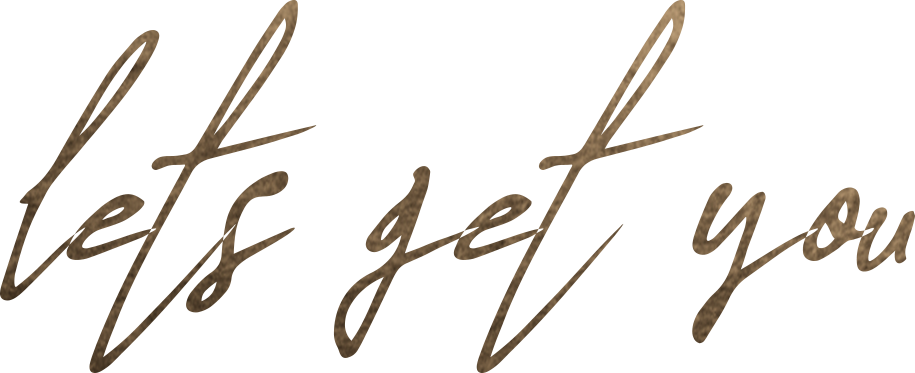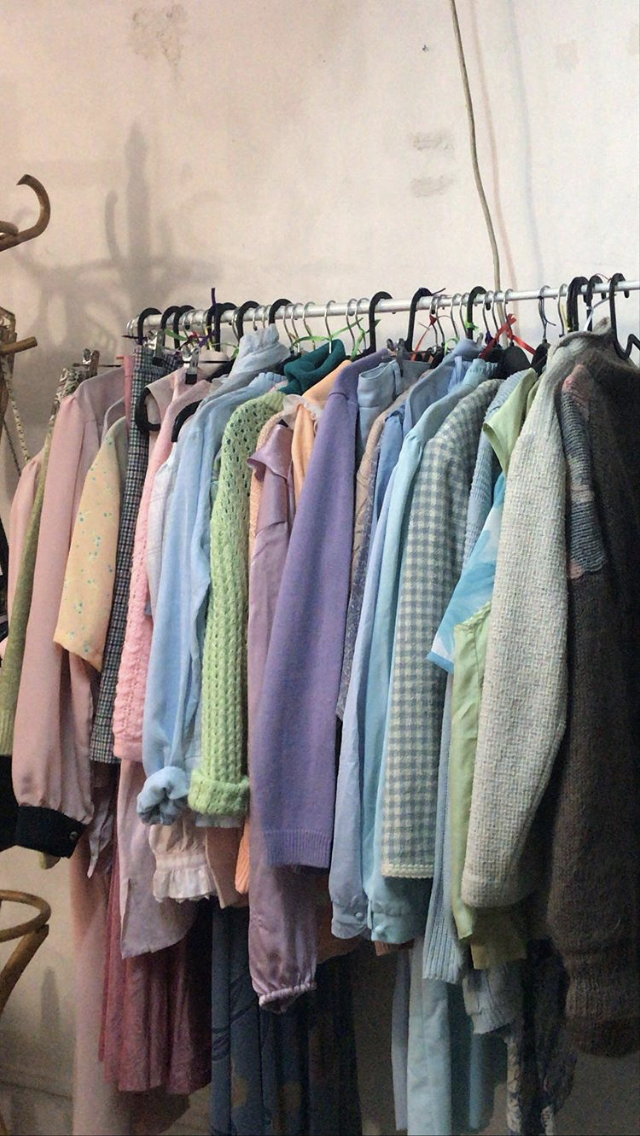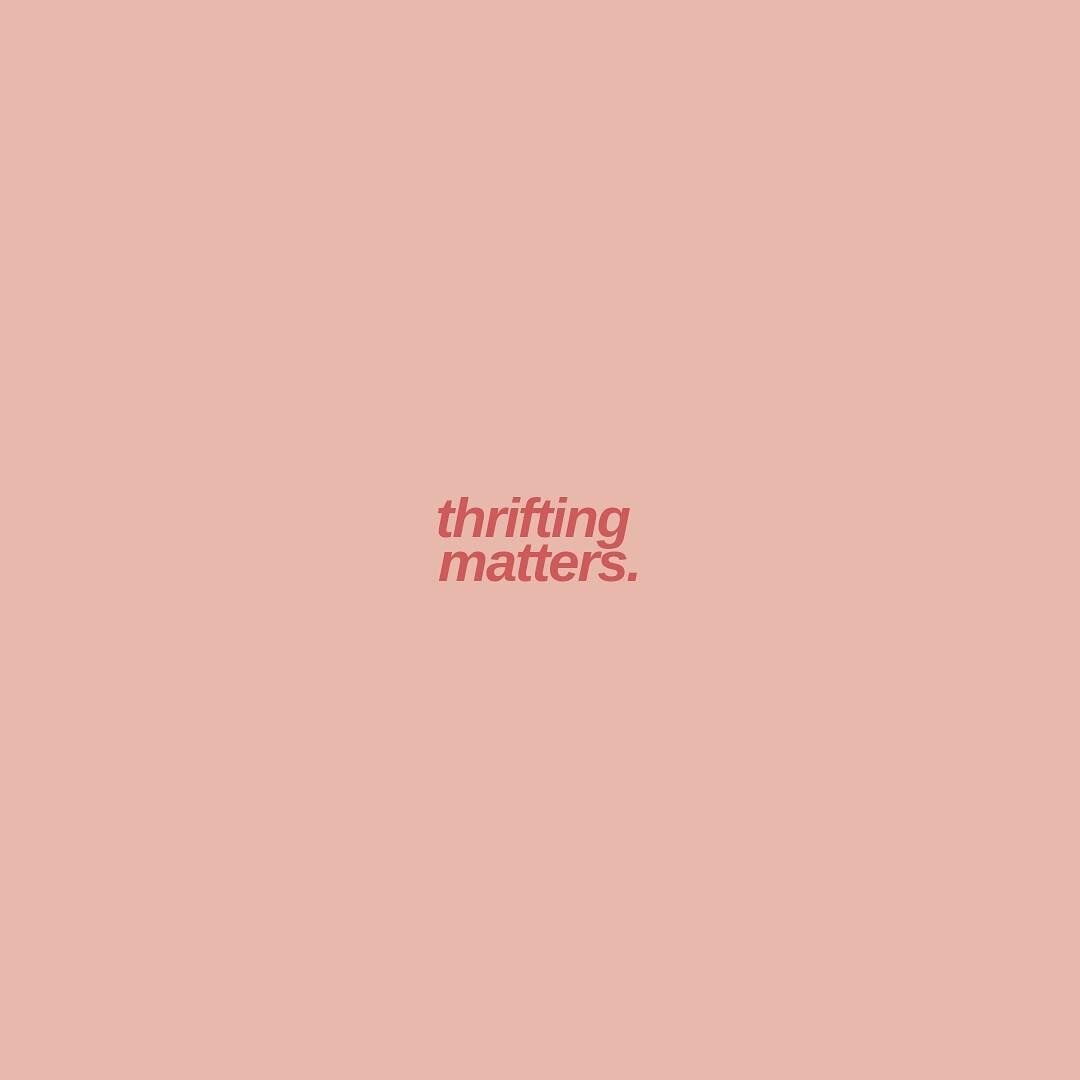Thrifting 101: how to get started shopping second hand & consignment
Second-hand shopping has not had a very glamorous history, and usually when we hear the words “thrift store,” a very specific image comes to mind:
An overcrowded place with far too many people, shelves upon shelves of unsorted clothes with old stains, and the lingering scent of a retirement home in the air.
In short, an unglamorous free-for-all.
For many LGY private styling clients, there’s an ick factor when thrifting and shopping secondhand. They don’t want to spend hours picking through leftovers when it’s hard enough to find clothes in-person and online.
Yet, with younger generations paving the way, the secondhand market will reach $51 billion within the next five years.
Follow along to find out why, what it means, how to go thrifting, shop consignment, and buy secondhand at Poshmark like a pro.
Why thrifting is so popular
It started on social media
Specifically, with influencers on YouTube.
Generation Z is like its influencer predecessors in that most of its younger members don’t have money to spend on fashionable new clothes.
They could choose one of two options:
Save two months of paychecks on a higher-end Theory blazer and survive on microwave ramen for a while.
Run amok through the isles of fast fashion outlets (a la forever 21 and H&M) to stock up on cheaply made clothing items that didn’t fit well and may unravel as soon as they hit a dryer.
Pretty bleak options, overall.
For both the buyer and the environment. So what did they do?
Let’s rewind first.
Thrifting’s original origin story
In the early 1920s thrifting was a response to a growing epidemic of clothing waste. (Sound familiar?)
It became a cheaper alternative to buying clothes first hand, and most of the storefronts were both run and frequented by immigrant communities.
When Christian organizations began running charity businesses like the Salvation Army, the practice of buying second hand was slightly destigmatized.
Since then, thrift stores have become a stable staple of the American shopping experience.
Ok, back to today and YouTube’s assist on thrift’s resurgence
In 2014, the rich-family-bred suburban girl aesthetic was in its heyday with influencers like My Life As Eva, and Bethany Mota leading charge.
For a while, it was the norm to watch wealthy girls on YouTube showing off their mountains of new clothes in 20-minute long haul videos.
Eventually fans tired of this polished image and with the recurrent rise in popularity of counter-culture and grunge chic in the late 10’s, there was a call for a more down-to-earth and spend-savvy influencer.
Almost on cue…
Young influencers like Best Dressed, Avery Ovard, and Emma Chamberlain popped on the scene as a refreshing alternative to the former.
One of the easiest ways for these influencers to maintain their grounded image was to buy clothes that were affordable for everyone, but no one wanted to buy fast fashion.
This generation grew up surrounded by consumerist culture, which heightened awareness of how toxic and environmentally damaging the constant cycle of fast fashion can be. At the same time, very few could afford to buy sustainable fashion because of its steep pricing.
So, how could Gen Z buy the cute clothes they craved without the waste or the price tag?
Thrifting has entered the chat
People on Instagram and YouTube started showing off their thrifted items in late 2016-2017, and the trend spread like pre-teen gossip.
Celebrities were photographed coming out of thrift stores toting bags of secondhand goods, making local thrift stores a new favorite social spot amongst the younger generation.
Chain thrift and consignment stores like Buffalo Exchange, Goodwill, and Beacon’s Closet gained popularity as everyone swapped tips on how to find designer-quality items for less.
Consignment VS. Thrift Stores — What’s the Difference?
Thrift stores take public donations to try to sell as many items as possible. Making quality, available sizes, and types of styles all over the place. They are then organized by category and sold as is.
Online thrift stores include:
Depop
Poshmark
Thredup
Grailed
Those online shops are run by the individual reselling the clothes they own or found elsewhere.
Consignment stores act as buyers sorting through a seller’s offerings and choosing only the most high quality, select pieces to display. They share an item’s sale profits with the seller, either at the beginning of the exchange or once the item sells in-store.
Online consignment shops include:
The Real Real
Vestaire Collective
Consignment Brooklyn
Luxury Garage
Vestige
While there is an added price to pay in curated consignment stores, they have been a godsend to the second-hand community because they make thrifting more bougie and curated.
They’re an ideal option for beginner secondhand shoppers or fashionistas able to spare a little extra for designer goods in a more traditional shopping experience. Also offers better chances unearthing special one-of-a-kind vintage or previous designer collections.
And about that Ick factor
While thrifting isn’t for everyone, whether or not it’s gross is a dated mindset.
As one friend put it:
“It’s like wearing a friend’s clothes, or how the prices people will pay to dig through a celebrity closet. No one is grossed out by Hailey Beiber’s or Oprah’s unwanted garbs.”
Stylist Pro-tip:
If you’re a Rent the Runway user or have a taste for higher quality clothing with an on-sale budget, fill in basic clothing gaps with consignment shopping to move away from fast fashion, yet stay in lower price points. You can uphold a luxury aesthetic without sacrificing to the Zara underlords!
Social responsibility and Sustainability
In 2017, 1 in 3 women thrifted most of their new clothing purchases, and that number is still rising today.
According to the World Research Institute, 82,782,000,000 kilograms of clothes are thrown away each year-- that's enough to fill 1 and a half empire state buildings every single day.
When those clothes end up in landfills, they can sit without breaking down for 200 years, and with more building up every day, there’s no end in sight for the production of stubborn waste.
It’s all sitting on our planet somewhere, and each unworn garment is added to those enormous piles.
With fashion’s cycle of consumerism adding to the environmental damage, landfills, and public waste, we unknowingly participated in this mass cycle of constant clothing waste for years.
Where’s the proof, sis?
A lot of people wonder whether or not the rise in thrifting’s popularity has actually made any kind of environmental impact. The truth is, thrifting as a means of fashion rather than fiscal conservation is a relatively new concept in the grand scheme of things.
Thrifting helps to:
1) Reduce textile waste
2) Keeps the oceans freer of polyester
3) Reduces the use of water (did you know it takes 650 gallons of water to make one new cotton t-shirt?)
4) Stops excessive carbon emissions/air pollution
Since 1950, “the amount of clothing produced has dramatically increased while clothing prices and quality have gone down. We are buying four times as much clothing as we used to but are spending 17 percent less because we buy clothes that quickly fall apart or goes out of style (or both).” - (Why Thrifting is Good for the Planet and Your Wallet)
Through thrifting, you keep the resources invested in all of these clothing items from going to waste.
Minimizing our carbon footprints and making small steps towards a better future is what we can expect from thrifting. It won’t solve all of our environmental problems (it won’t even solve all the problems within the fashion/textile industry), but it’s a fantastic alternative.
Buying secondhand is a mindful way to help decrease pollution from production, waste, and use of resources while still getting your fashion fix.
Myth: thrifting is only for low-budget shoppers
There’s debate in the thrifting community about the ethics of thrifting for fun, as many low-income individuals rely on thrifting as a sole source of clothing.
Ultimately, thrifting is for everyone, even if it isn’t a financial necessity.
There continues to be an overwhelming quantity of unused/donated clothing in thrift stores, and the more people reusing it, the better chance we have at minimize our carbon footprint.
Until your local Goodwill turns into a minimalist, high-end boutique, we’re calling B.S. on gentrification.
How thrifting can help you form a personal style
In this age of nostalgia, we’ve seen a resurgence in everything from Tamagotchis on eBay to trendsetters airing on the side of vintage inspiration-- from the 60s to 80s, to 70s, to 90s.
Instead of looking for newly produced imitating replicas, look for authentic fashion.
Clothes made in the late 20th century are usually more durable than fast fashion products today. Chalk it up to slower production cycles and less cutting corners.
2. Make older pieces modern by pairing them with fashion-forward styles. It’ll keep you from looking costume-y and dated.
Guess what?
At some thrift stores, you can even find vintage pieces from designer brands like Hermés, Burberry, or Calvin Kline, and way more.
It all depends on where you look, and what you’re looking for.
Stylist Pro-tip:
Etsy isn’t just for custom jewelry and knick-knacks. It’s a fabulous place to find authentic vintage pieces. For example, you can find sweater vests from the 50s and dresses from the 40s.
Plus, use the online thrift and consignment stores listed above to search for trends you want to try
Thrifting Tips from a Veteran
If you do decide to get into thrifting, check out these tips for a no-nonsense approach to finding your new fav pieces in the most unlikely of places.
1) Lose the agenda
If you have a loose idea of what you’re looking for, like “formal wear” or “day out clothes,” or “basics in black” you’re solid, but you’ll set yourself up for failure by imagining the perfect garment. Thrifting is all about the thrill of the hunt, and you never know what you’re gonna get.
Have a general idea of what you want, but don’t tie yourself down to a super-specific item, like the ultimate black button down for work that you need YESTERDAY. The more of an open mind you can have, the better.
2) Make a day of it
If you don’t know what you’re looking for, which is probably more realistic for all of us, then thrifting can be a fun activity. Grab some friends or a good playlist, and hit the racks. Most thrift stores get restocked with new donations on Fridays and Saturdays, so Sundays and early weekdays are the best times to go.
3) Always check menswear
Yes, you read that right. Blazers, sweater vests, and masculine silhouettes are so trendy this season, and thrift stores are the perfect place to look. For that power-suit look without the designer hassle, go for a houndstooth or striped statement blazer to pair with your more neutral-colored outfits.
These go great with both skirts and pants depending on the vibe you want. PLUS if it’s real menswear, you know it's gonna have some decent pockets. Hallelujah!
4) Browse often
Thrifting all around Manhattan and Brooklyn is a blast, and there’s nothing more fun than finding a new hidden hole in the wall to explore. That being said, your best bet for finding go-to pieces that can blend with your basics seamlessly is to find a thrift store near you that you like and go once a week/once a month.
Checking in often will help you get comfortable with developing an eye for your aesthetic and keeping up with new donations in case something catches your eye. You won’t always find something to take home, but you’ll get way more familiar with the thrifting game.
5) Take some chances
If you find an item that is anywhere decent in your budget, you should take a risk and bring it home with you. Sometimes the funkiest can be a little intimidating in the store, but once you give them a little love, they end up becoming a closet staple.
If your bold choice doesn’t work, throw it on the donate pile, but if your gamble pays off, you might just end up with a new brand, material, or cut that you love.
Thrifting Alternatives
If your lifestyle puts a damper on thrifting IRL, that doesn't mean we’re back to the drawing board. There are great apps like Depop and Poshmark that make the thrifting experience available to everyone!
With these apps, there’s way less inventory to sort through at once and it makes the experience feel a little less overwhelming.
You can search for specific items you are looking for, and cut out the in-person factor.
Usually, shipping is really fast, and the items are still discounted!
Depop is the trendier of the two, but that can also mean resale prices are higher because the items have all been specifically curated by each shop.
The endless cycle of fashion is enough to make anyone dizzy these days. So why not give thrifting a try, for the sake of the environment, better clothing quality, your wallet, and more unique pieces with history in every single stitch?























